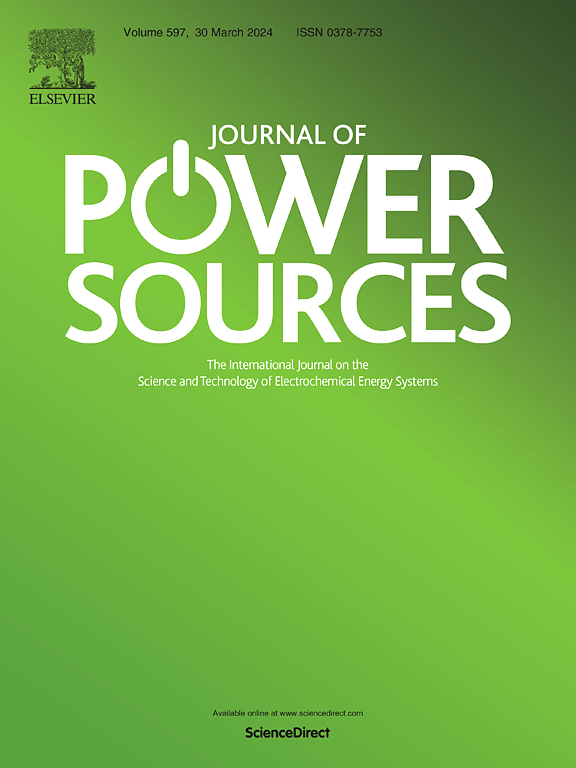Poisoning and recovery behavior of Ni-GDC based electrolyte-supported solid oxide fuel cell exposed to common sulfur compounds under processed biogas environment
IF 8.1
2区 工程技术
Q1 CHEMISTRY, PHYSICAL
引用次数: 0
Abstract
In recent years, biogas-fed solid oxide fuel cell (SOFC) technology based on Ni-GDC electrolyte-supported cell has attracted interests due to its high sulfur tolerance. However, the degradation and recovery behavior of the cells under exposure to common sulfur compounds remains to be clearly understood especially with electrochemical impedance spectroscopy (EIS). This paper investigates the degradation and recovery behavior of Ni-GDC electrolyte-supported SOFCs under sulfur poisoning via EIS. Two common sulfur compounds in biogas, dimethyl sulfide and HS, were tested under three gas compositions: dry H, cold recirculation gas (CO-rich, low HO), and hot recirculation gas (CO- and HO-rich). HS induced greater voltage degradation (35%–45% irreversible) than dimethyl sulfide, which showed complete recovery. Hot recirculation gas led to higher continuous degradation, suggesting that the water-gas shift reaction mitigates long-term poisoning. Lower HS concentrations caused cumulative irreversible degradation, reducing severity in subsequent higher concentration tests. EIS analysis showed that gas conversion and O surface exchange processes were the main contributors to resistance increase, with the latter suffering a 200% rise. This study enhances the understanding of sulfur poisoning effects and EIS behavior in biogas-fed SOFCs, aiding operando operation diagnostics.
求助全文
约1分钟内获得全文
求助全文
来源期刊

Journal of Power Sources
工程技术-电化学
CiteScore
16.40
自引率
6.50%
发文量
1249
审稿时长
36 days
期刊介绍:
The Journal of Power Sources is a publication catering to researchers and technologists interested in various aspects of the science, technology, and applications of electrochemical power sources. It covers original research and reviews on primary and secondary batteries, fuel cells, supercapacitors, and photo-electrochemical cells.
Topics considered include the research, development and applications of nanomaterials and novel componentry for these devices. Examples of applications of these electrochemical power sources include:
• Portable electronics
• Electric and Hybrid Electric Vehicles
• Uninterruptible Power Supply (UPS) systems
• Storage of renewable energy
• Satellites and deep space probes
• Boats and ships, drones and aircrafts
• Wearable energy storage systems
 求助内容:
求助内容: 应助结果提醒方式:
应助结果提醒方式:


